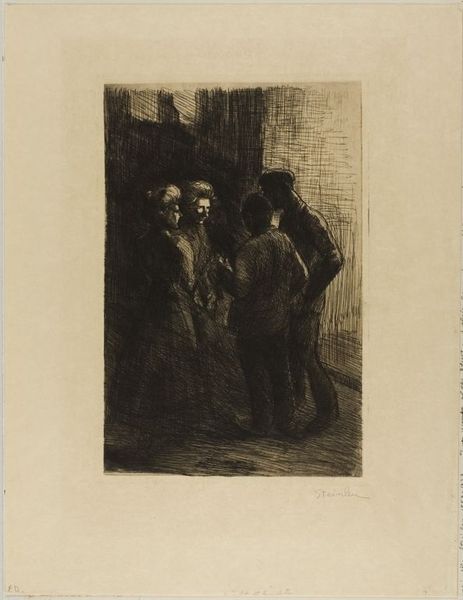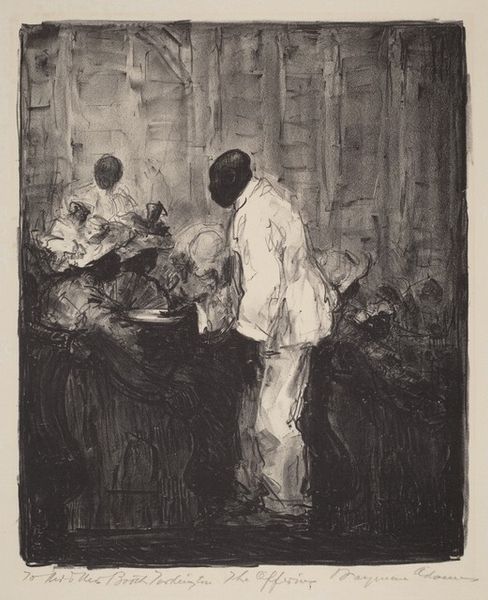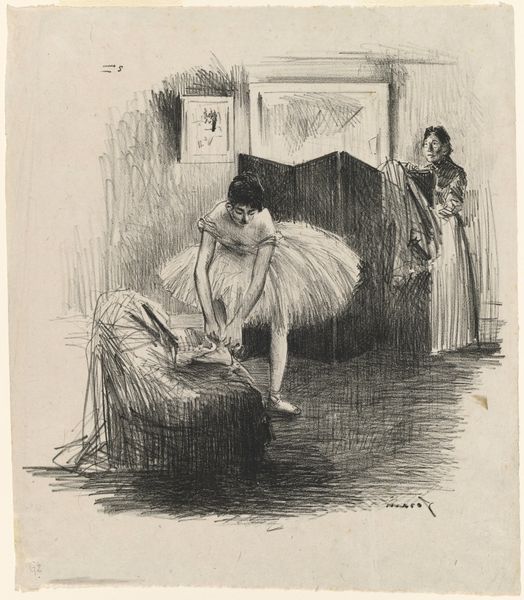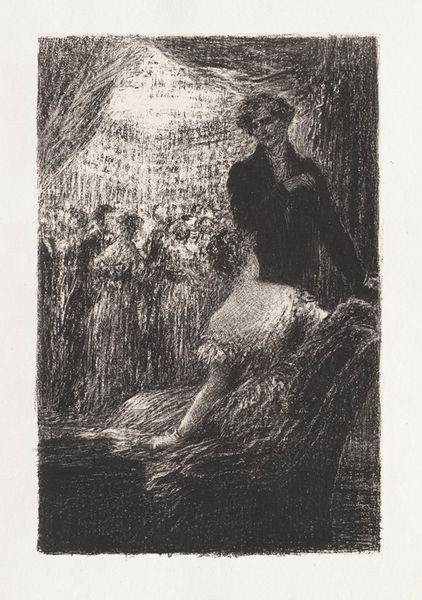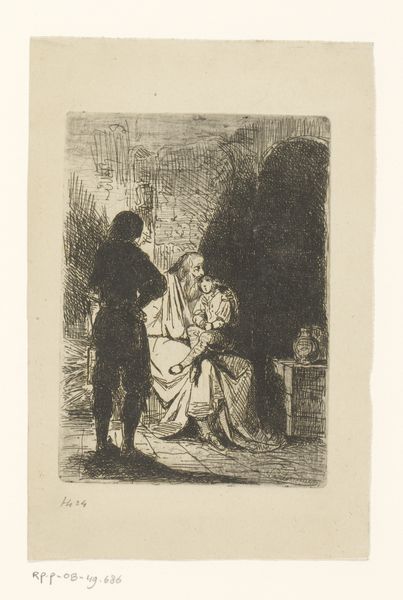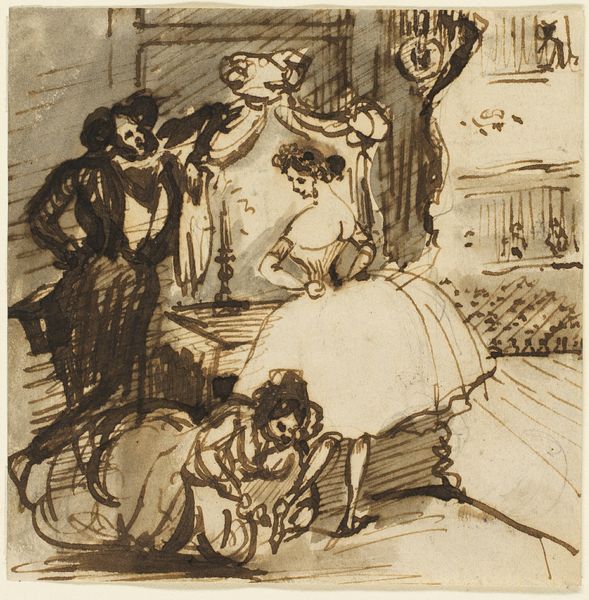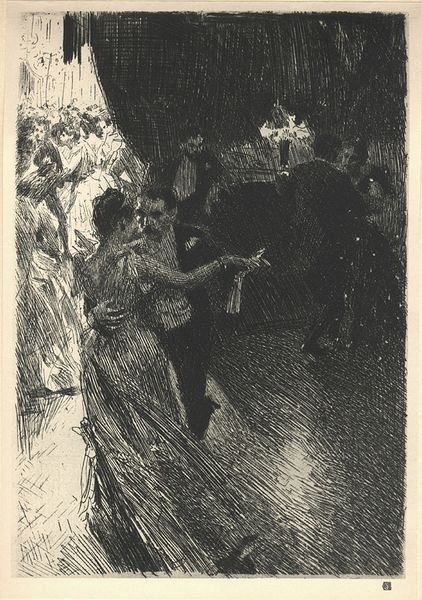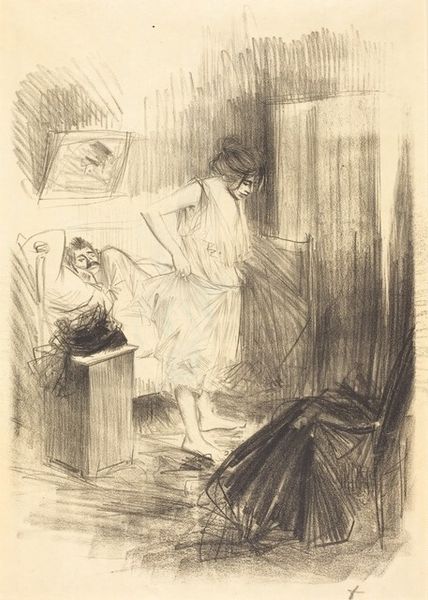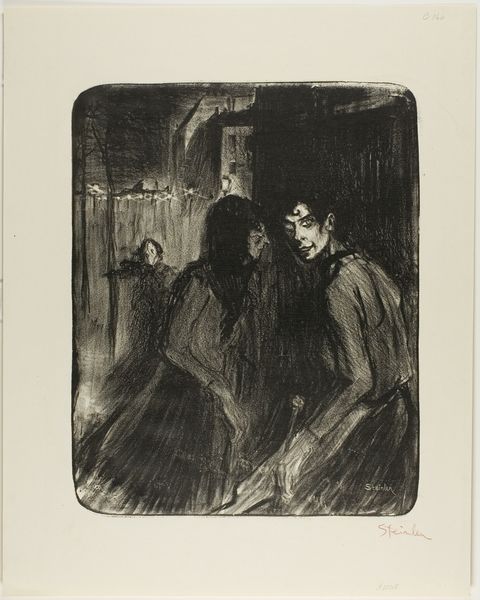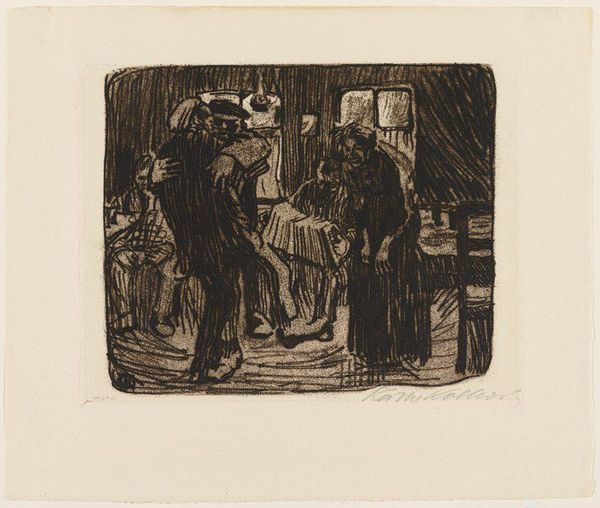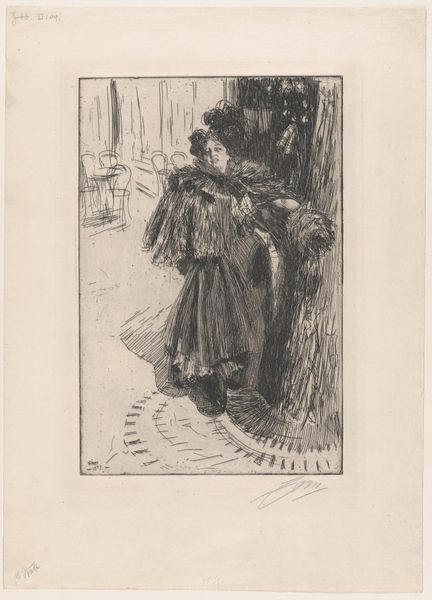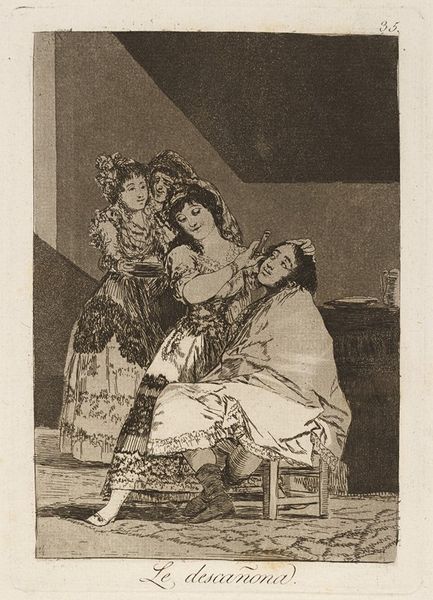
drawing, print, graphite
#
portrait
#
pencil drawn
#
drawing
# print
#
pencil sketch
#
charcoal drawing
#
pencil drawing
#
graphite
#
genre-painting
#
graphite
#
realism
Dimensions: image: 245 x 199 mm sheet: 377 x 291 mm
Copyright: National Gallery of Art: CC0 1.0
Curator: Let's consider Wayman Adams' "The Clinging Vine" from 1930, created using graphite, a humble yet versatile medium. Editor: Immediately striking, isn't it? Somber tones, dramatic lighting...almost theatrical. The textural contrast between the figures' garments and the deep background adds to that effect. Curator: Adams was quite renowned as a portraitist. What strikes me is the representation of African Americans at this particular juncture. Note how this artwork navigates or perhaps challenges the established conventions of representing Black figures during that period. It's genre painting, after all. Editor: Absolutely, and consider the social underpinnings of graphite itself—its accessibility. Was this choice influenced by the subjects being depicted, a conscious reflection of class and the means of production visible in everyday life? This print democratizes image making in many ways, breaking from traditional portraiture using only the barest of means. Curator: An intriguing interpretation. How do you perceive the titular "clinging vine" dynamic unfolding within the social fabric represented in the print? The interpersonal, and therefore also societal dynamic of two individuals? Editor: I think it's hard to ignore that implicit tension and fragility that he renders using the medium. It feels precarious, almost like it's hanging by a thread. There is the stark darkness contrasting with what appear to be higher class people at an event, creating that division by technique and darkness, contrasting and dividing two figures and two separate classes of people, showing those differences in stark and brutal realities with minimal use of medium. Curator: Yes, it speaks to larger questions about the portrayal of race and social standing in the art of the period, pointing toward themes of vulnerability, dependency and resistance. These depictions become inherently political, no matter how subtle. Editor: Indeed. Analyzing Adams’s deliberate use of medium and representation exposes not only individual experiences but the prevailing socio-economic conditions of that era. Food for thought about art, class, and labour. Curator: Precisely. It underscores how closely art is interwoven with power, identity, and representation—critical touchpoints for us today, too.
Comments
No comments
Be the first to comment and join the conversation on the ultimate creative platform.

